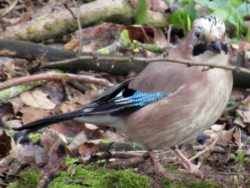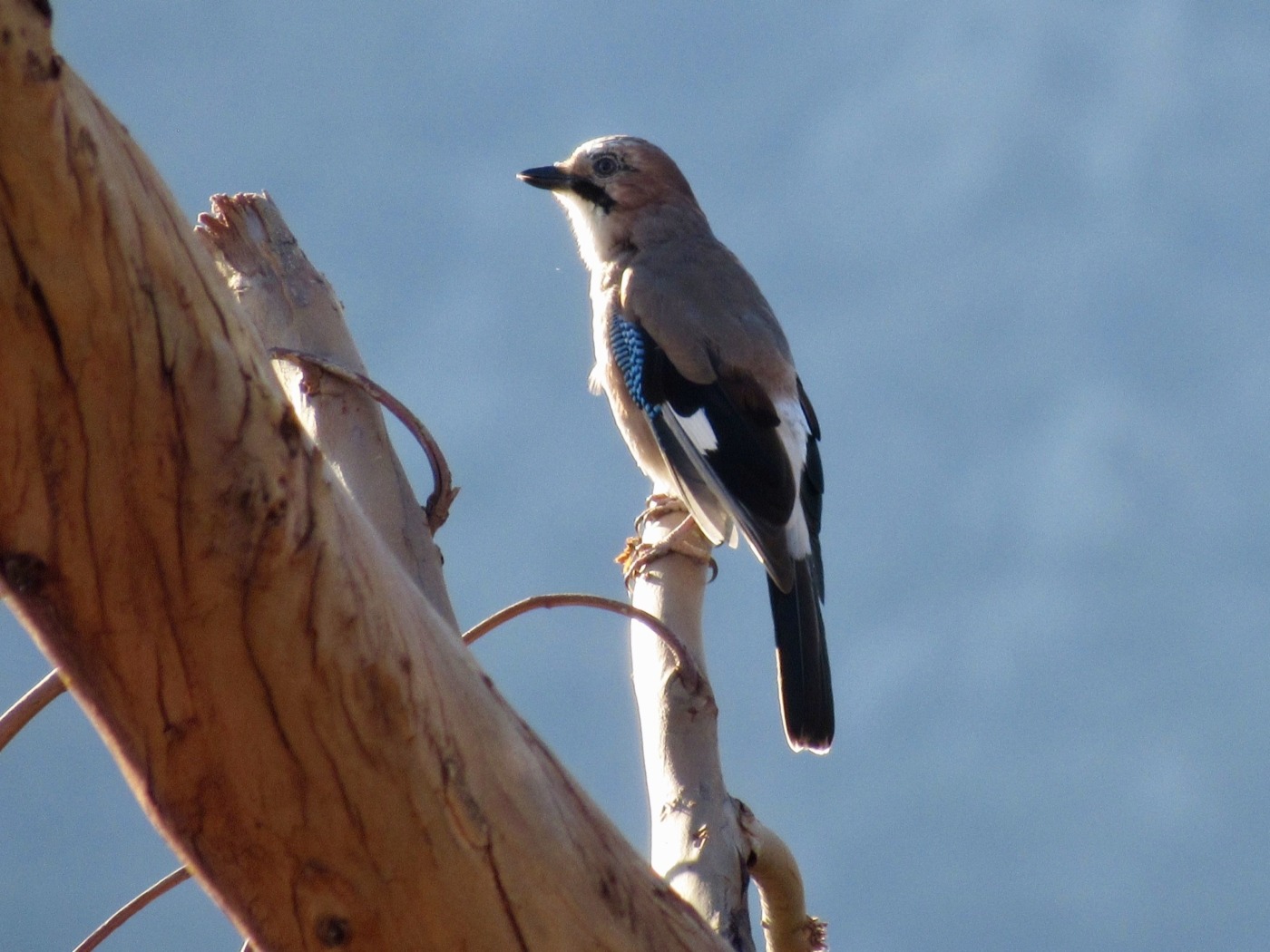Wild Warwick: Jays
The turn of the seasons felt very sudden after our unusually scorchio summer. The heat has well and truly left us in the last few weeks but try not to let it get you down; with the sweet smell of the fallen leaves and the flashes of colour from birds and berries, Autumn is gorgeous on campus. As the leaves fall, the wildlife becomes easier to spot and I’ve been noticing one often overlooked bird more than others lately.
Jay birds are a strawberry fudge brown colour with black tails and moustaches as well as startling blue and white stripes on their wings. They make an entertaining range of squawks, squeaks and whistles, especially the one which seems to like to argue with its own reflection in the windows of the science buildings at Gibbet Hill. They are such chatty birds that even their scientific name is garrulous, meaning chatty acorn eater (Garrulus glandarius). Jays are able to imitate the calls of other birds such as buzzards and tawny owls and can use this as an alarm to scare away their predators which include magpies. I also found videos of jays on YouTube imitating cats and people!
Jays are able to imitate the calls of other birds such as buzzards and tawny owls and can use this as an alarm to scare away their predators which include magpies

Image: Betty Sands
The fancy blue markings on their wings are a result of structural colour rather than a pigment, the feather structure is like a sponge on a nanoscale which scatters the light so that only the blue wavelengths are emitted. Sometimes called the British bird of paradise, the Eurasian jay is a corvid like crows, magpies and ravens. So their defining characteristics are pretty and noisy; I’m sure we all have a friend like that.
Similar to the squirrels, much of their autumnal activities revolve around hiding thousands of nuts per bird in secret stores and also stealing food from one another. In the Spring, male jays will give treats such as caterpillars as gifts to females and they will even anticipate her desires by choosing a snack they haven’t seen her eat in a while. Jays live for 17 years on average which means that a jay you see on campus today might have been squawking and flashing its electric blue feathers when Britney Spears and Justin Timberlake were still an item and Avril Lavigne was releasing her first album.
Sometimes called the British bird of paradise, the Eurasian jay is a corvid like crows, magpies and ravens
I hope you’ll keep an ear out on campus for these birds emitting a series of shrieks as they fly between trees or an eye out for them hopping on the ground hunting for nuts among the scrabbling squirrels. If you whistle to them and you’re lucky, perhaps they might even reply to you.

Comments